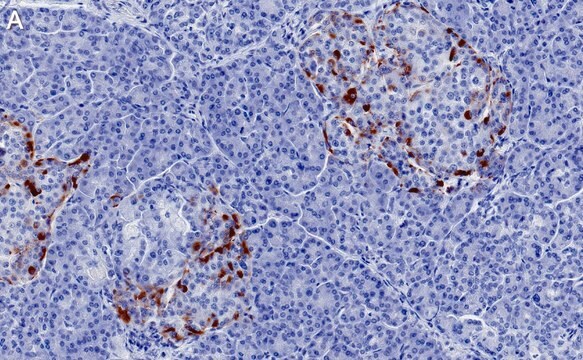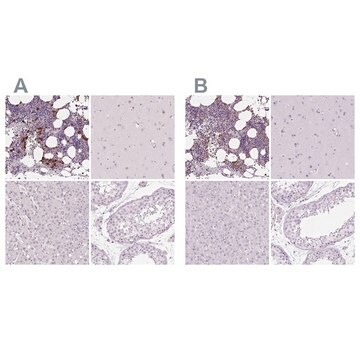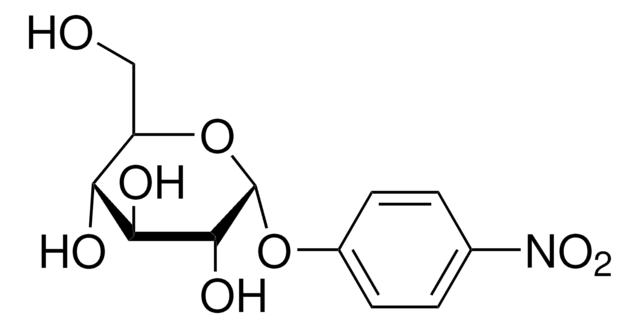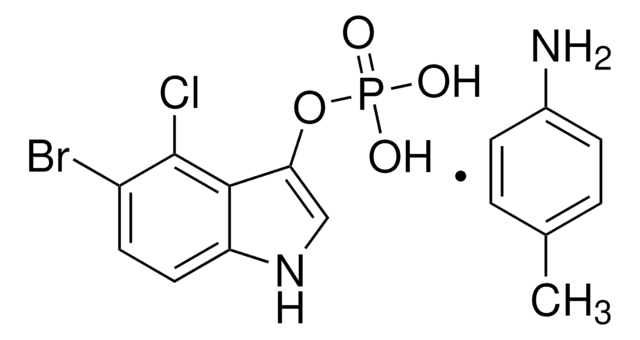ABN1727
Anti-CASZ1 Antibody
from guinea pig
Sinónimos:
Zinc finger protein castor homolog 1, Castor-related protein, CASZ1V1, CASZ1V2, Putative survival-related protein, Zinc finger protein 693
About This Item
Productos recomendados
biological source
guinea pig
Quality Level
antibody form
unpurified
antibody product type
primary antibodies
clone
polyclonal
species reactivity
mouse, human
technique(s)
immunocytochemistry: suitable
immunofluorescence: suitable
immunoprecipitation (IP): suitable
western blot: suitable
NCBI accession no.
UniProt accession no.
shipped in
ambient
target post-translational modification
unmodified
Gene Information
human ... CASZ1(54897)
mouse ... Casz1(69743)
General description
Specificity
Immunogen
Application
Immunofluorescence Analysis: A 1:1,000 dilution from a representative lot detected CASZ1 immunoreactivity only among EYFP-negative cells, but not EYFP-positive Casz1-knockout cells by fluorescent immunohistochemistry staining of 4% paraformaldehyde-fixed retina cryosections from E17.5 transgenic mouse embryos carrying floxed Casz1 alleles and a ROSA26-floxed-stop::EYFP reporter allele, as well as Pax6 promoter-driven cre recombinase expression to allow tissue-specific (conditional) Casz1 knockout (Courtesy of Pierre Mattar, Christine Jolicoeur, and Michel Cayouette, Institut de recherches cliniques de Montreal (IRCM), Canada).
Immunoprecipitation Analysis: 5 µL from a representative lot immunoprecipitatd CASZ1 from 1 mg of mouse retina extract (Courtesy of Pierre Mattar, Christine Jolicoeur, and Michel Cayouette, Institut de recherches cliniques de Montreal (IRCM), Canada).
Western Blotting Analysis: A 1:1,000 dilution from a representative lot detected both CASZ1 spliced variants (CASZ1V1 and CASZ1V2) of either human or mouse origin in 20 µg of lysates from respective HEK293T transfectants (Courtesy of Pierre Mattar, Christine Jolicoeur, and Michel Cayouette, Institut de recherches cliniques de Montreal (IRCM), Canada).
Western Blotting Analysis: A 1:500 dilution from a representative lot detected a CASZ1 immunoreactive band in E17.5 mouse embryonic retina extract, but not in lysate from untransfected HEK293 cells (Courtesy of Pierre Mattar, Christine Jolicoeur, and Michel Cayouette, Institut de recherches cliniques de Montreal (IRCM), Canada).
Neuroscience
Quality
Western Blotting Analysis: A 1:5,000 dilution of this antiserum detected both CASZ1 spliced variants (CASZ1V1 and CASZ1V2) of either human or mouse origin in 10 µg of lysates from respective HEK293T transfectants.
Target description
Physical form
Storage and Stability
Handling Recommendations: Upon receipt and prior to removing the cap, centrifuge the vial and gently mix the solution. Aliquot into microcentrifuge tubes and store at -20°C. Avoid repeated freeze/thaw cycles, which may damage IgG and affect product performance.
Other Notes
Disclaimer
¿No encuentra el producto adecuado?
Pruebe nuestro Herramienta de selección de productos.
Storage Class
12 - Non Combustible Liquids
wgk_germany
WGK 1
flash_point_f
Not applicable
flash_point_c
Not applicable
Certificados de análisis (COA)
Busque Certificados de análisis (COA) introduciendo el número de lote del producto. Los números de lote se encuentran en la etiqueta del producto después de las palabras «Lot» o «Batch»
¿Ya tiene este producto?
Encuentre la documentación para los productos que ha comprado recientemente en la Biblioteca de documentos.
Nuestro equipo de científicos tiene experiencia en todas las áreas de investigación: Ciencias de la vida, Ciencia de los materiales, Síntesis química, Cromatografía, Analítica y muchas otras.
Póngase en contacto con el Servicio técnico







